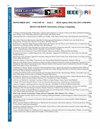Enhanced YOLOv8 for Detecting Multiple Defects on Bridge Surfaces
IF 1.3
4区 工程技术
Q3 COMPUTER SCIENCE, INFORMATION SYSTEMS
引用次数: 0
Abstract
With the advancement of machine vision, numerous models have been created to detect imperfections in bridges. However, the bulk of these models are designed for single defect detection and are not adept at managing cases with concurrent multiple defects. As a result, quickly recognizing the array of defects on bridge surfaces is still a major obstacle. In response to this challenge, the current research introduces the YOLOv8-CBAM-Wise-IoU model, specifically crafted for the detection of seven distinct bridge surface defect categories. This model integrates the CBAM mechanism for focusing attention and the Wise-IoU for calculating loss, with its effectiveness measured by metrics including accuracy, retrieval rate, F1 measure, and mAP50. Rigorous ablation analyses and benchmarking against both single-tier and multi-tier deep learning frameworks were performed to substantiate the models utility. The YOLOv8-CBAM-Wise-IoU model exhibited formidable performance, recording an accuracy rate of 97.9%, a retrieval rate of 76%, an F1 measure of 58%, an mAP50 of 55.4%, and an mAP50-95 of 32.4%. These results outstrip those of standard models and other ablation variations, emphasizing the models ability to boost the precision and robustness of detecting various defect types on bridge surfaces. Code is available at https://github.com/IamSunday/Enhanced-YOLOv8-for-Detecting-Multiple-Defects-on-Bridge-Surfaces.增强的YOLOv8用于检测桥梁表面上的多个缺陷
随着机器视觉的进步,已经创建了许多模型来检测桥梁的缺陷。然而,这些模型中的大部分是为单个缺陷检测而设计的,并且不擅长管理同时存在多个缺陷的情况。因此,快速识别桥梁表面的缺陷阵列仍然是一个主要障碍。为了应对这一挑战,目前的研究引入了YOLOv8-CBAM-Wise-IoU模型,专门用于检测七种不同的桥梁表面缺陷类别。该模型集成了用于集中注意力的CBAM机制和用于计算损失的Wise-IoU,其有效性通过准确性、检索率、F1测量和mAP50等指标来衡量。对单层和多层深度学习框架进行了严格的消融分析和基准测试,以证实模型的实用性。yolov8 - cam - wise - iou模型的准确率为97.9%,检索率为76%,F1测量值为58%,mAP50为55.4%,mAP50-95为32.4%。这些结果超过了标准模型和其他烧蚀变化的结果,强调了模型在检测桥梁表面各种缺陷类型方面提高精度和鲁棒性的能力。代码可从https://github.com/IamSunday/Enhanced-YOLOv8-for-Detecting-Multiple-Defects-on-Bridge-Surfaces获得。
本文章由计算机程序翻译,如有差异,请以英文原文为准。
求助全文
约1分钟内获得全文
求助全文
来源期刊

IEEE Latin America Transactions
COMPUTER SCIENCE, INFORMATION SYSTEMS-ENGINEERING, ELECTRICAL & ELECTRONIC
CiteScore
3.50
自引率
7.70%
发文量
192
审稿时长
3-8 weeks
期刊介绍:
IEEE Latin America Transactions (IEEE LATAM) is an interdisciplinary journal focused on the dissemination of original and quality research papers / review articles in Spanish and Portuguese of emerging topics in three main areas: Computing, Electric Energy and Electronics. Some of the sub-areas of the journal are, but not limited to: Automatic control, communications, instrumentation, artificial intelligence, power and industrial electronics, fault diagnosis and detection, transportation electrification, internet of things, electrical machines, circuits and systems, biomedicine and biomedical / haptic applications, secure communications, robotics, sensors and actuators, computer networks, smart grids, among others.
 求助内容:
求助内容: 应助结果提醒方式:
应助结果提醒方式:


